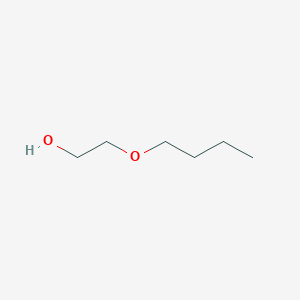-
Categories
-
Pharmaceutical Intermediates
-
Active Pharmaceutical Ingredients
-
Food Additives
- Industrial Coatings
- Agrochemicals
- Dyes and Pigments
- Surfactant
- Flavors and Fragrances
- Chemical Reagents
- Catalyst and Auxiliary
- Natural Products
- Inorganic Chemistry
-
Organic Chemistry
-
Biochemical Engineering
- Analytical Chemistry
- Cosmetic Ingredient
-
Pharmaceutical Intermediates
Promotion
ECHEMI Mall
Wholesale
Weekly Price
Exhibition
News
-
Trade Service
Chemical machinery and equipment network hotspots pay attention to chemical machinery and equipment
Since January this year, news about the Jialing River thallium pollution has frequently appeared in the headlines of major media, which has aroused widespread attention.
After the incident, * conducted emergency investigation and supervision and treatment, and finally determined that the source of pollution was substandard wastewater discharged by a non-ferrous smelting enterprise in Gansu Province and a steel smelting enterprise in Shaanxi Province.
As the Jialing River is a tributary of the Yangtze River with a wide basin, the thallium-excess incident that occurred this time not only directly threatened the lives and health of the people, but also had a significant impact on the ecological environment of the relevant basin.
After the incident, * conducted emergency investigation and supervision and treatment, and finally determined that the source of pollution was substandard wastewater discharged by a non-ferrous smelting enterprise in Gansu Province and a steel smelting enterprise in Shaanxi Province.
As the Jialing River is a tributary of the Yangtze River with a wide basin, the thallium-excess incident that occurred this time not only directly threatened the lives and health of the people, but also had a significant impact on the ecological environment of the relevant basin.
It is understood that thallium (TI) is a widely distributed and highly toxic harmful heavy metal.
Its compound is the main hazardous waste listed in the WHO's key restriction list and is also on the list of priority pollutants for control in my country.
Thallium in nature has a strong accumulation.
It can enter the human body through water and food and threaten human health.
It mainly exists in lead, zinc and other ores.
If the wastewater discharged by ore smelting enterprises does not remove thallium, thallium pollution incidents are prone to occur.
Its compound is the main hazardous waste listed in the WHO's key restriction list and is also on the list of priority pollutants for control in my country.
Thallium in nature has a strong accumulation.
It can enter the human body through water and food and threaten human health.
It mainly exists in lead, zinc and other ores.
If the wastewater discharged by ore smelting enterprises does not remove thallium, thallium pollution incidents are prone to occur.
At this stage, my country's surface water, groundwater, and drinking water standards all stipulate the limit of thallium concentration, which is 0.
1μg/L.
On December 31, 2020, *promulgated the "Water Pollution Discharge Standard for the Iron and Steel Industry" (GB13456-2012) amendment, which added the total thallium indicator for drainage, except for requiring that the thallium content in the discharged water of iron and steel enterprises should not exceed 0.
05mg/L; There are also clear requirements for the monitoring and testing of total thallium.
1μg/L.
On December 31, 2020, *promulgated the "Water Pollution Discharge Standard for the Iron and Steel Industry" (GB13456-2012) amendment, which added the total thallium indicator for drainage, except for requiring that the thallium content in the discharged water of iron and steel enterprises should not exceed 0.
05mg/L; There are also clear requirements for the monitoring and testing of total thallium.
Thallium pollution is a serious hazard, so it is necessary to strengthen the discharge and monitoring of industrial wastewater.
At present, the analysis methods of thallium water quality mainly include graphite furnace atomic absorption spectrophotometry, inductively coupled plasma mass spectrometry (ICP-MS), biochemical methods, electrochemical methods, and high performance liquid chromatography.
Among them, graphite furnace atomic absorption spectrophotometry can determine nearly 50 elements, and is simple to operate, with low operating costs and low detection limits.
It can meet industrial pollutant discharge standards and the analysis of trace heavy metals in surface water, groundwater and drinking water.
Claim.
At present, the analysis methods of thallium water quality mainly include graphite furnace atomic absorption spectrophotometry, inductively coupled plasma mass spectrometry (ICP-MS), biochemical methods, electrochemical methods, and high performance liquid chromatography.
Among them, graphite furnace atomic absorption spectrophotometry can determine nearly 50 elements, and is simple to operate, with low operating costs and low detection limits.
It can meet industrial pollutant discharge standards and the analysis of trace heavy metals in surface water, groundwater and drinking water.
Claim.
In addition, inductively coupled plasma mass spectrometry ICP-MS is also the main detection method for thallium pollution in industrial wastewater.
Inductively coupled plasma mass spectrometry has high sensitivity, and the detection limit can reach the level of pg/L~ng/L, and it has a determination speed.
Fast, multi-element simultaneous analysis, etc.
, are widely used in water pollution emergency monitoring and pollution source investigation and other fields, and can also meet the detection and analysis of trace thallium in surface water, groundwater, wastewater and other water environments.
Inductively coupled plasma mass spectrometry has high sensitivity, and the detection limit can reach the level of pg/L~ng/L, and it has a determination speed.
Fast, multi-element simultaneous analysis, etc.
, are widely used in water pollution emergency monitoring and pollution source investigation and other fields, and can also meet the detection and analysis of trace thallium in surface water, groundwater, wastewater and other water environments.
Water is the source of life and an important foundation for industrial production and social and economic development.
Heavy metal pollution in environmental water quality will not only endanger human health, but also affect the stability of the ecological environment.
Therefore, it is necessary to strengthen the detection and protection of environmental water.
At the same time, relevant departments should also fully realize the importance of water resources protection, and actively adopt scientific heavy metal water quality testing technologies to strengthen the quality of modern environmental water quality testing.
Heavy metal pollution in environmental water quality will not only endanger human health, but also affect the stability of the ecological environment.
Therefore, it is necessary to strengthen the detection and protection of environmental water.
At the same time, relevant departments should also fully realize the importance of water resources protection, and actively adopt scientific heavy metal water quality testing technologies to strengthen the quality of modern environmental water quality testing.
Original Title: Frequent Heavy Metal Pollution Incidents Scientific Instruments Help Environmental Protection







